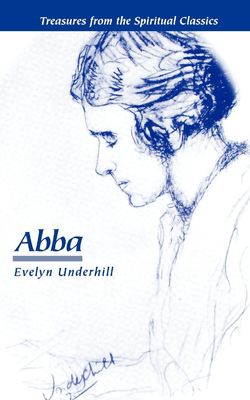Читать книгу Abba - Evelyn Underhill - Страница 6
HOW TO PRAY
ОглавлениеTHE NEW TESTAMENT has preserved for us, in our Lord’s reply to His followers, a complete description of what Christian prayer should be; its character and objective; its balance and proportion; its quality and tone. As we explore this description and try to realize all that is implied in it, we find the whole world of prayer, its immense demands and immense possibilities, opening before us. Yet in accordance with that steady hold on history, that deep respect for the tradition within which He appeared, which marks the whole of Christ’s teaching, the description was given—as the answer to those who asked for the secret of Eternal Life was given—in words which were already familiar to the askers: in seven linked phrases which were a part of Jewish prayer, and can be traced to their origin in the Old Testament. It is as if we went to a saint and asked him to teach us to pray, and he replied by reciting the Quinquagesima Collect. We can imagine the disappointment of the disciples—‘We knew all this before!’ The answer to this objection is the same as the answer to the Lawyer: this do and you shall live. You already have all the information. Invest it with realism, translate it into action: phrases into facts, theology into religion. I am not giving you a set formula for repetition, but several complementary pictures of the one life of prayer.
It is too often supposed that when our Lord said, ‘In this manner pray ye.’ He meant not ‘these are the right dispositions and longings, the fundamental acts of every soul that prays,’ but ‘this is the form of words which, above all others, Christians are required to repeat.’ As a consequence this is the prayer in which, with an almost incredible stupidity, they have found the material of those vain repetitions which He has specially condemned. Again and again in public and private devotion the Lord’s Prayer is taken on hurried lips, and recited at a pace which makes impossible any realization of its tremendous claims and profound demands. Far better than this cheapening of the awful power of prayer was the practice of the old woman described by St. Teresa, who spent an hour over the first two words, absorbed in reverence and love.
It is true, of course, that this pattern in its verbal form, its obvious and surface meaning, is far too familiar to us. Rapid and frequent repetition has reduced it to a formula. We are no longer conscious of its mysterious beauty and easily assume that we have long ago exhausted its inexhaustible significance. The result of this persistent error has been to limit our understanding of the great linked truths which are here given to us; to harden their edges, and turn an instruction which sets up a standard for each of the seven elements of prayer, and was intended to govern our whole life towards God, into a set form of universal obligation.
This is a sovereign instance of that spiritual stupidity with which we treat the ‘awful and mysterious truths’ religion reveals to us; truths of which Coleridge has rightly said, that they are commonly ‘considered so true as to lose all the powers of truth, and lie bedridden in the dormitory of the soul.’1 But when we ‘centre down,’ as Quakers say, from the surface of human life to its deeps, and rouse those sleeping truths and take them with us, and ask what they look like there—in the secret place where the soul is alone with God and knows its need of God—then, all looks different. These great declarations disclose their intensity of life, their absolute quality; as a work of art which has hung respected and unloved in a public gallery glows with new meaning when we bring it into the home or the sanctuary for which it was really made. Seen thus, the Paternoster reminds us how rich and various, how deeply rooted in the Supernatural, the Christian life is or should be, moving from awestruck worship to homely confidence, and yet one: how utterly it depends on God, yet how searching is the demand it makes on man. ‘Every just man,’ says Osuna, ‘needs the seven things for which this prayer—or this scheme of prayer—asks.’2 Taken together they cover all the realities of our situation, at once beset by nature and cherished by grace: establishing Christian prayer as a relation between wholes, between man in his completeness and God who is all.
And we note their order and proportion. First, four clauses entirely concerned with our relation to God; then three concerned with our human situation and needs. Four hinge on the First Commandment, three hinge on the Second. Man’s twisted, thwarted and embittered nature, his state of sin, his sufferings, helplessness, and need, do not stand in the foreground; but the splendour and beauty of God, demanding a self-oblivion so complete that it transforms suffering, and blots out even the memory of sin. We begin with a sublime yet intimate invocation of Reality, which plunges us at once into the very ground of the Universe and claims kinship with the enfolding mystery. Abba, Father. The Infinite God is the Father of my soul. We end by the abject confession of our dependence and need of guidance: of a rescue and support coming to our help right down in the jungle of life. Following the path of the Word Incarnate, this prayer begins on the summits of spiritual experience and comes steadily down from the Infinite to the finite, from the Spaceless to the little space on which we stand. Here we find all the strange mixed experience of man, over-ruled by the unchanging glory and charity of God.
1Coleridge’s Table Talk, 28th June, 1834.
2The Third Spiritual Alphabet. Treatise 13.
